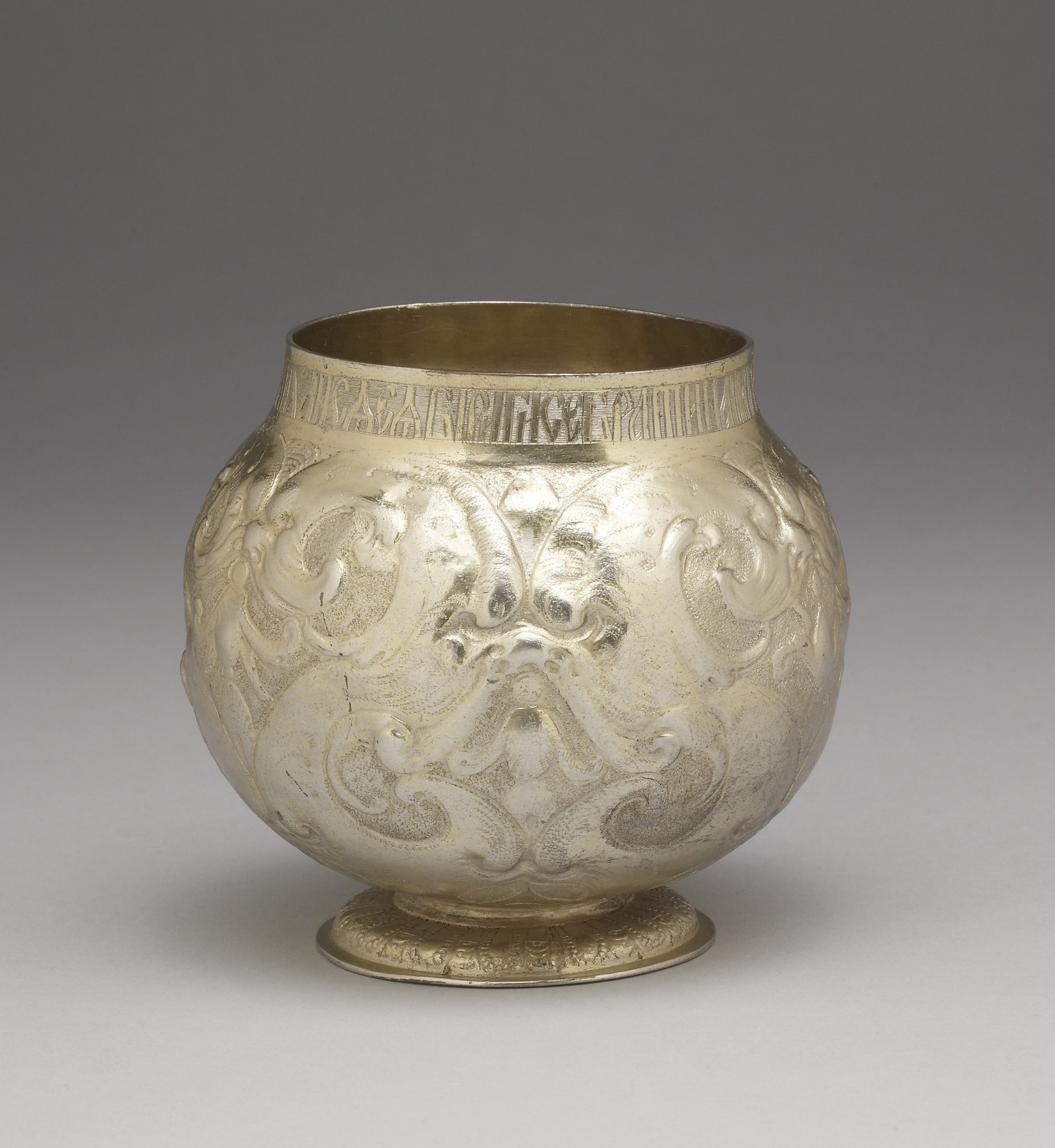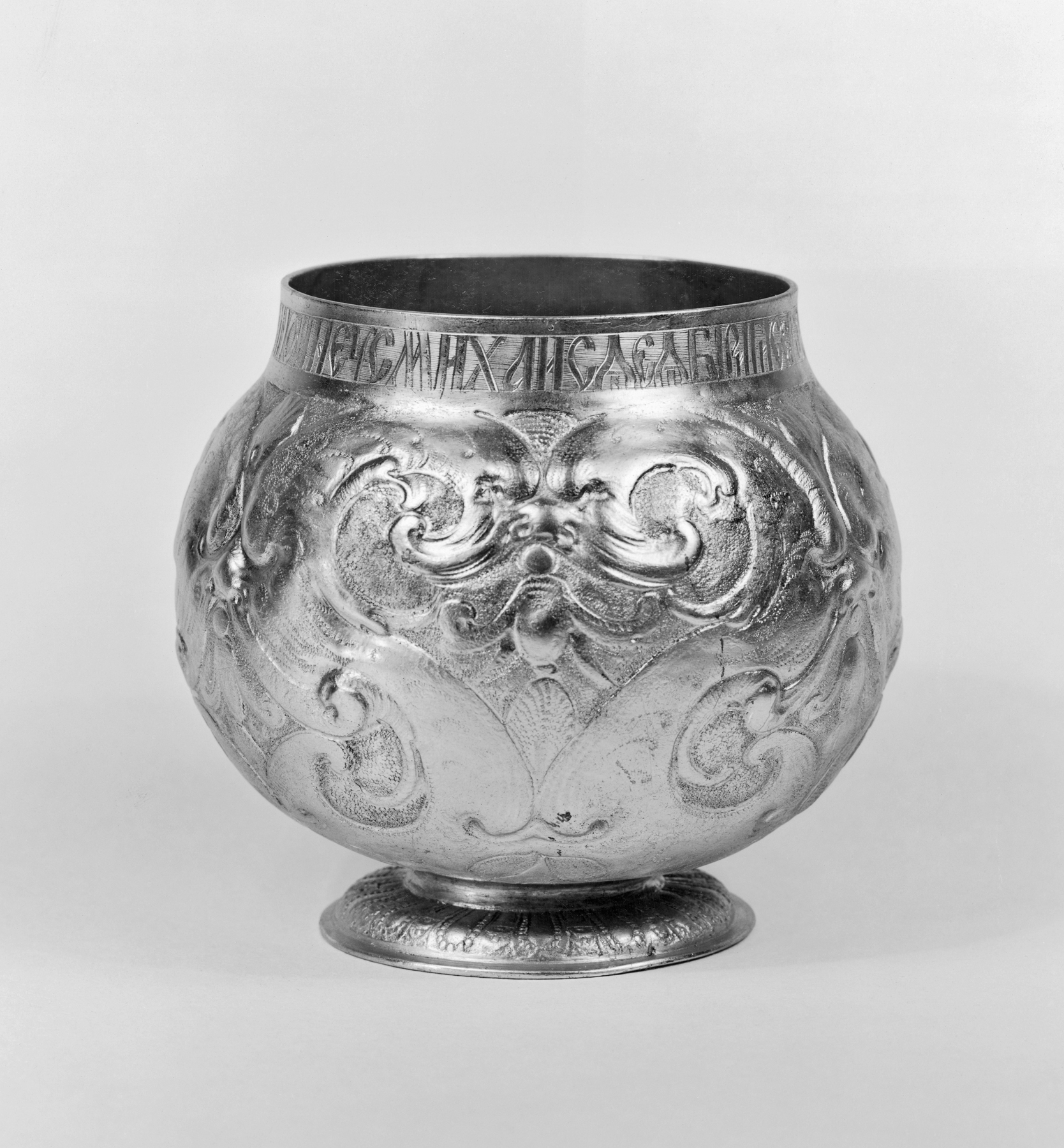Drinking Cup (Bratina)
(Baroque Europe )
During the early 1600s, Dutch merchants were in Moscow actively pursuing the Russian fur trade. They brought gifts for the court that apparently included Dutch metalwork, which influenced the style of local craftsman. Their work, in turn, would have been prized as gifts to be taken back to Holland. This characteristic "bratina" (from the Russian "brat," meaning brother) was to be passed around at feasts. The embossed, chased decoration with masks and flowing forms draws on the work of Dutch silversmiths at mid-century, epitomized by Johannes Lutma.
Inscription
Provenance
Provenance (from the French provenir, 'to come from/forth') is the chronology of the ownership, custody, or location of a historical object. Learn more about provenance at the Walters.
Count Aleksandr Alekseevich Musin-Pushkin, Saint Petersburg, before 1904, by purchase; Alexandre Polovtsoff (Aleksandr Aleksandrovich Polovtsov), Saint Petersburg and Paris, by purchase; Henry Walters, Baltimore, 1929, by purchase; Walters Art Museum, 1931, by bequest.
Exhibitions
| 2017-2018 | Fabergé and the Russian Crafts Tradition: An Empire's Legacy . The Walters Art Museum, Baltimore. |
| 1988-1989 | A Millennium of Christianity: Russian Art from The Walters Art Gallery. The Walters Art Gallery, Baltimore. |
| 1959-1960 | Russian Art: Icons and Decorative Arts from the Origin to the Twentieth Century. The Walters Art Gallery, Baltimore. |
Geographies
Russia, Moscow (Place of Origin)
Measurements
H: 3 11/16 × Diam: 4 1/16 in. (9.4 × 10.3 cm)
Credit Line
Acquired by Henry Walters, 1929
Location in Museum
Charles Street: Second Floor: 17th-Century Dutch Cabinet Rooms
Accession Number
In libraries, galleries, museums, and archives, an accession number is a unique identifier assigned to each object in the collection.
In libraries, galleries, museums, and archives, an accession number is a unique identifier assigned to each object in the collection.
57.814






